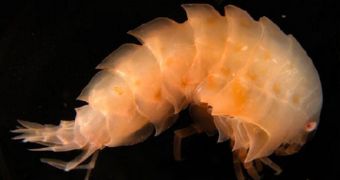For over 10 years, thousands of scientists have been involved in the most complex research effort ever undertaken to understand the world's waters. The goal of the international Census of Marine Life (CML) was to discover as many new marine species as possible until 2010. More than 2,700 experts worked towards that end, but now, as they near the end of their epic quest, most of them believe that anywhere between 60 and 80 percent of all marine species remain undiscovered.
The estimate comes on the heels of a recent study, which showed that the ocean's floors may be hosting a level of biodiversity far greater than what scientists ever imagined. During the CML, experts identified no less than 1,200 new species. This is the official number of confirmed findings, but some discoveries have yet to be confirmed. Experts working on the international endeavor say that they managed to identify and confirm more than 10,000 already-known marine species, all of which were living in one or more of the 25 critical oceanic zones the CML analyzed.
The latest issue of the open-access scientific journal PLoS ONE contains 12 papers dealing with findings made during the CML, and the message that all of these works share is the same – the level of biodiversity in the world's oceans is mind-boggling. Discovering it, however, is another matter entirely. The researchers say that they found discovering new species to be a walk in the park. Based on that fact, they estimate that a more thorough scan could reveal considerably more new species. “There is a lot more to do, but most of the big stuff is known,” explains Dalhousie University expert Ron O’Dor, one of the senior scientists in the CML, quoted by Science News.
One of the conclusions the survey arrived at is the fact that science already knows most, if not all, large animals living in the ocean. That is to say, it's very unlikely that future investigations will discover additional species of sea lions, turtles, whales, or dolphins. Conversely, it's highly likely that other studies will discover new varieties of krill and crustaceans. These families of species apparently account for a large proportion of the biodiversity present in the world's oceans. Officially, the Census for Marine Life will come to an end in October 2010.

 14 DAY TRIAL //
14 DAY TRIAL //